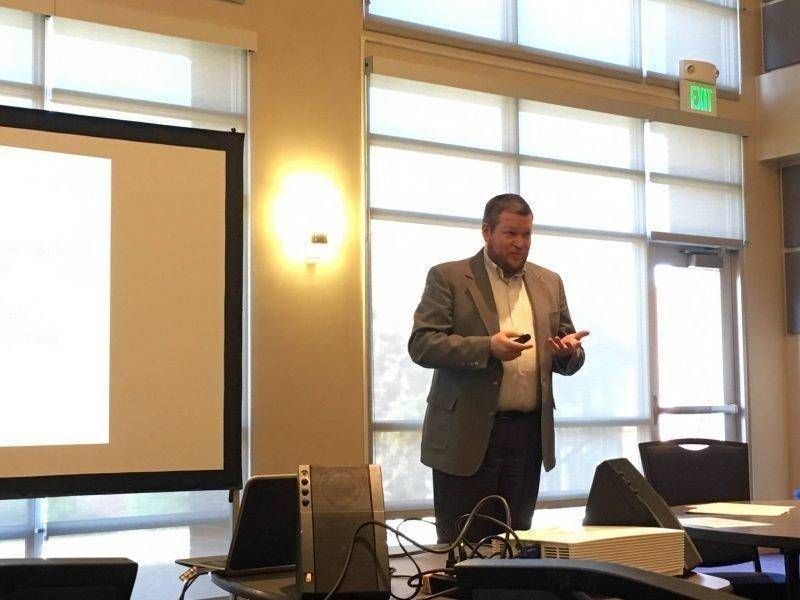Thomas Smith, Utah State Office of Rehabilitation’s Business Relations Specialist, presents on utilizing individuals with disabilities as a workforce advantage at a recent BEAR meeting.
In the workplace, it pays off to turn one’s disability into an ability for your business to grow and better serve your customers. Representatives from the Utah State Office of Rehabilitation (USOR) presented on this topic at the recent Business Expansion and Retention (BEAR) meeting on Thursday.
According to the Rehabilitation Act of 1973, a disability is any mental or physical condition that substantially limits one or more of life’s major functions, such as walking, speaking, hearing, speaking and more. USOR’s Director Leah Lobato took time to explain that while many factors may cause limits for disabled workers, some exclusions apply. For example, current illegal use of prescription or other drugs does not classify as a disability along with compulsive gambling, kleptomania and pyromania.
But, why have an entire training on this topic? According to Lobato, the aim is to establish a national utilization goal for individuals with disabilities.
“Federal contractors and subcontractors would be required to set a hiring utilization goal of 7% of employees to be workers with disabilities,” Lobato shared.
While this is only a goal, not a quota, this idea aims to lower unemployment by disabled persons and also improve a company’s outreach in the community. According to Lobato, disabled employees on average miss work less and are on time more often than their non-disabled counterparts. Disabled persons also have a high rank of productivity for increased collaboration and partnerships.
While more and more companies are hiring a disabled workforce, a certain responsibility for etiquette comes along with the process.
“The important thing to recognize when working with people with disabilities is that is person is different and should be treated accordingly,” said Thomas Smith, USOR’s Business Relations Specialist.
According to Smith, 56.7 million Americans have a disability. Of those, 50% are deaf/hard of hearing, 25% have a mental disability and 2% are wheelchair users. This means that 30% of families in the U.S. have one of more members with a disability.
While working with a disability might pose some extra effort, Smith stressed the importance of putting the person first and their disability second. While there are varying levels of abilities and limitations, employers should not make assumptions about the needs of an employee. While some accommodations may need to be made for disabled employees, the Job Accommodation Network reports that 50% of accommodations cost $50 or less.
During the presentation, USOR representatives stressed the fact that a disability only has to be disclosed if a person is requesting a reasonable accommodation. Otherwise, a person only has to disclose information they choose.
For more information on disabled persons in the workplace and the USOR, please visit www.usor.utah.gov.

